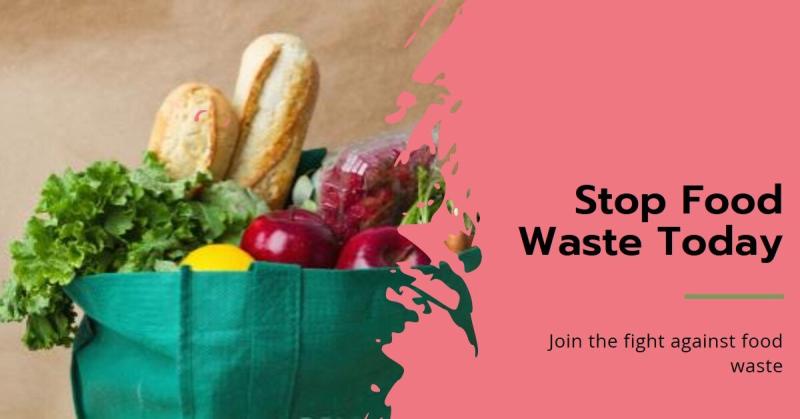Understanding Food Waste Management - What It Is and Why It Matters

Food waste management refers to the
systematic processes and strategies aimed at minimizing and managing food waste
throughout the supply chain—from production and distribution to consumption.
Proper food waste management is crucial not only for reducing environmental
harm but also for improving resource efficiency and lowering costs across the
food industry.
Food waste is a significant global
issue, with millions of tons discarded each year. Addressing this challenge is
essential for reducing greenhouse gas emissions, conserving water, and feeding
millions of hungry people worldwide. By understanding the causes and
implementing effective strategies, businesses and individuals can make a
significant impact.
Common
Causes of Food Wastage in the Supply Chain and Households
1.
Production and Harvesting
At the production level, food waste
can occur due to improper harvesting techniques, spoilage during
transportation, and crop overproduction. Natural factors like weather
conditions, pests, and diseases also contribute to significant losses.
2.
Processing and Packaging
During the food processing and
packaging stages, inefficiencies in handling raw materials, faulty packaging,
and product recalls contribute to waste. Foods that are cosmetically imperfect
or past their sell-by date are often discarded despite being edible.
3.
Retail and Distribution
Retailers may discard food due to
overstocking, expired dates, or aesthetic imperfections. Inaccurate demand
forecasting, improper storage, and handling during transportation also lead to
food spoilage before products even reach consumers.
4.
Households
At the household level, poor meal planning, overbuying, improper storage, and misunderstanding expiration labels are common causes of food waste. Consumers often throw away food because they fail to use it before it goes bad.
How
to Measure Food Waste Effectively: Tools and Techniques
Effectively measuring food waste is
key to understanding its scale and identifying areas for improvement. Here are
some tools and techniques to help measure food waste:
1.
Waste Audits
A waste audit involves
systematically collecting and analyzing waste over a set period. This can be
done at different stages of the supply chain, from farms to retail outlets, to
determine the amount and type of waste generated.
2.
Food Waste Tracking Software
Businesses and restaurants can use
food waste tracking software to monitor their waste levels in real-time. These
tools provide data on the quantity and types of food being wasted, enabling
organizations to adjust ordering patterns and streamline operations.
3.
Weighing Waste
Another simple method is weighing
food waste daily. By keeping track of the weight, businesses can better understand
the volume of food wasted and develop strategies to reduce it over time.
4.
Consumer Surveys
At the household level, conducting
surveys can help identify common food waste habits and reasons for discarding
food. The data gathered can inform educational campaigns aimed at promoting
mindful consumption.
Innovative
Solutions to Reduce Food Waste Across the Industry
Several innovative solutions are
being adopted to tackle food waste:
1.
Food Donation Programs
One of the most effective ways to
reduce food waste is through donation programs. Surplus food from grocery
stores, restaurants, and food producers can be redirected to those in need.
Organizations like food banks partner with businesses to collect and distribute
excess food before it becomes waste.
2.
Better Inventory Management
Improving inventory management with
smart forecasting tools can help businesses reduce food waste. Technologies
like AI and machine learning can predict consumer demand more accurately,
minimizing overstocking and spoilage.
3.
Food Rescue Apps
Food rescue apps connect consumers
with businesses offering discounted surplus food. Apps like Olio have gained
popularity by helping restaurants and retailers sell food that would otherwise
go to waste at the end of the day.
4.
Packaging Innovation
Innovative packaging solutions that
prolong shelf life, such as custom printed mylar pouches and modified atmosphere packaging, play a crucial role in
reducing food spoilage. These solutions maintain food freshness for longer,
especially during transportation and storage.
Recycling
Food Waste: Practical Approaches for Sustainable Practices
Recycling food waste is a practical
way to reduce the environmental impact and recover valuable resources. Here are
some methods:
1.
Composting
Composting is one of the most common
ways to recycle food waste. Organic food scraps are broken down into
nutrient-rich compost, which can be used to enrich soil in farming and
gardening. Composting reduces landfill waste and cuts methane emissions.
2.
Anaerobic Digestion
Anaerobic digestion is a process
that breaks down organic matter, such as food waste, in the absence of oxygen.
This process produces biogas (used for energy) and digestate (used as
fertilizer). Many municipalities and food companies are investing in anaerobic
digestion facilities to recycle food waste on a larger scale.
3.
Converting Food Waste into Animal Feed
Some food waste, especially produce,
grains, and bakery items, can be converted into animal feed. This method
diverts food waste from landfills while providing a sustainable source of
nutrition for livestock.
4.
Food Waste-to-Energy Conversion
In some places, food waste is
converted into energy through processes like incineration or gasification.
These methods capture energy from waste materials, which can be used to
generate electricity or heat.
Conclusion
Food waste management is an
essential issue for both businesses and consumers to address. By understanding
its causes, measuring waste accurately, and implementing innovative solutions,
we can significantly reduce food wastage. In addition, recycling food waste
through methods like composting, anaerobic digestion, and food-to-energy
conversion can help create a more sustainable food system.
Every step counts in building a
world where food is not only produced efficiently but also consumed mindfully,
minimizing waste and maximizing sustainability.

Comments